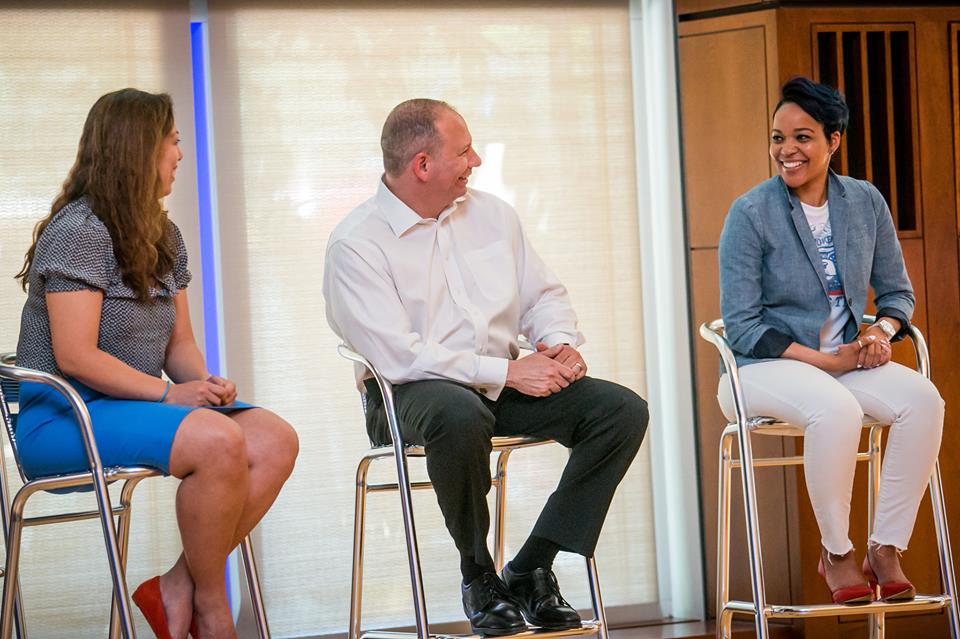This year’s Philly Tech Week was another great recognition and celebration of the incredible things happening in our amazing city, especially for those of us who attended Introduced. This gathering brought together the brands, organizations and thought-leaders driving technology and innovation breakthroughs across Greater Philadelphia. I was thrilled to represent my colleagues from regional management consulting firm Navigate and to be surrounded by such an impressive lineup of speakers.
While many presentations, panels and working sessions tapped into the elusive topics of innovation, disruption and transformation, I was personally struck by our collective “stepping back” from these themes that preoccupy our boardrooms, marketing departments and annual goal-setting. The elevation of the “why” of technology — not just the “what” and “how” — was evident throughout the day; presentations on human-centered delivery, empathy-led solutions, and design thinking made it to the major leagues at #PTW18.
Navigate’s panel, “But I’m Not a Designer: Fostering Innovation Through Design Thinking,” focused on how Philly’s top firms are using Design Thinking to transform their brands and customer experiences through the development of innovative products and services for consumers. Through the use of empathic research, creative solution exploration, rapid prototyping and iterative solution delivery, design thinking is fundamentally changing how industry-leading organizations are creating more relevant, valuable digital solutions.
Three panelists who are leading the innovation charge for their companies — Lisha Davis, Head of Innovation Studio at Vanguard; Dana S. Wilson, Vice President of Customer Experience at Comcast; and Russ Kliman, Head of Innovation and Strategic Programs at SEI — discussed how buzzwords commonly associated with digital and innovation (“disruption,” “transformation,” etc.) don’t always get to the heart of the process.
In fact, even by prioritizing innovation, organizations can look past the oft-neglected concept of desirability — that is to say: Is the perceived need for a new product or updated technology real to the people you are trying to reach? Too often organizations invest limited resources into a solution based on hypotheses without considering if they are answering the right question: What customer need are we trying to serve with this effort?

Navigate’s Kip Wetzel moderates the panel. (Photo by Stacey Salter Moore)
During the course of our session, each panelist challenged the audience to start employing design-thinking principles. I was personally moved by their shared insight and realized that we are all actually designers, even if not in our job titles. I was professionally inspired to hear shared stories and best practices to elevate empathy.
Lisha Davis
- Top recommendation: Get inspiration from outside your company. Explore ways that other brands address customer needs, Davis said. Think beyond the “way we have always done things.”
Davis explored the distinction between being “client-centric” and “client-focused,” and the importance of understanding pain paints through the lens of the client or end-user. She talked about how design thinking requires investing time upfront to validate your efforts and ensuring that you are answering the right question, not just the expectations of tenured, established leadership.
Russ Kliman
- Top recommendation: Create personas. Start referring to customer profiles by name to drive a common language around the motives, desires and beliefs that drive individuals.
Kliman talked about how his team organically integrated design thinking into established SEI processes. They started small and took incremental steps, iterating quickly with prototypes and focusing on quick wins. They considered the end-user early and often in the process, focusing less on traditional KPIs and more on bringing empathy and humanity to the clients they serve.
Dana Wilson
- Top recommendation: Garage Week. Set up these formal exploration sessions to solve the biggest needs of your customers. Regularly step into your customers’ shoes and walk a mile with them.
Wilson told the audience that “seeing was believing” for executives at Comcast. They quickly saw value in the framework after witnessing the success of swift iteration — rapid prototyping and minimum viable products (MVPs) allowed for quick validation of ideas. Wilson provided myriad examples of how the client-centric mindset stemmed naturally from product development to customer service and experience.
###
We were energized by the engaged, diverse audience who helped to take the conversation in several interesting directions. While making it to the digital big-leagues, design thinking is still maturing in Philadelphia. As Navigate continues to support clients with design-led programs, we are encouraged to have partners like SEI, Comcast and Vanguard on this journey to elevate empathy and put human-centered design at the core of digital transformation.
Before you go...
Please consider supporting Technical.ly to keep our independent journalism strong. Unlike most business-focused media outlets, we don’t have a paywall. Instead, we count on your personal and organizational support.
Join our growing Slack community
Join 5,000 tech professionals and entrepreneurs in our community Slack today!




